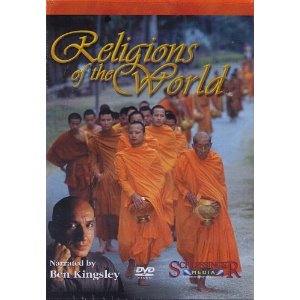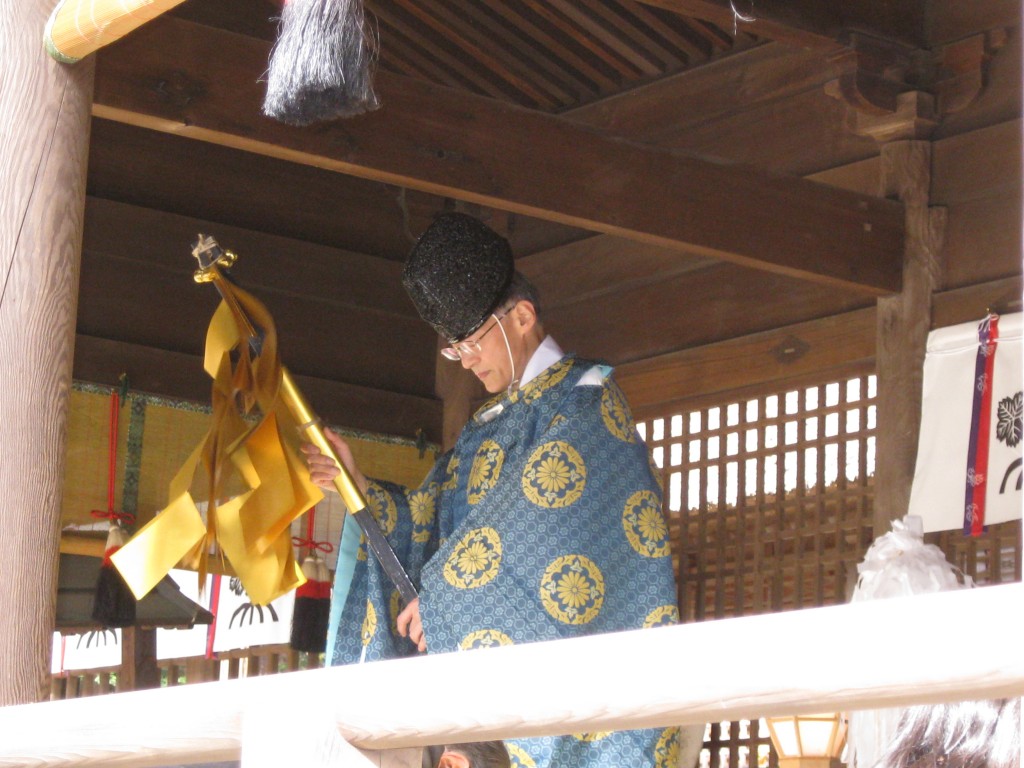 Youtube has a substantial four-part video programme on Shinto as part of the Religions of the World series. It’s narrated by Ben Kingsley, who gets one or two pronunciations wrong but on the whole does a credible job. One irksome point was a tendency to talk of shrines while showing a Buddhist pagoda, but otherwise the programmes do a good job in presentation and there is some interesting early footage as well as vivid shots of festival fervour.
Youtube has a substantial four-part video programme on Shinto as part of the Religions of the World series. It’s narrated by Ben Kingsley, who gets one or two pronunciations wrong but on the whole does a credible job. One irksome point was a tendency to talk of shrines while showing a Buddhist pagoda, but otherwise the programmes do a good job in presentation and there is some interesting early footage as well as vivid shots of festival fervour.
The featured expert is John Nelson, author of A Year in the Life of a Shinto Shrine, who picks his way through the minefield of defining what is Shinto and how it originated. One point he emphasises is the practical aspect and that custom is more essential to the religion than belief, which comes later if it comes at all. The progamme’s take on Shinto is that it is synonymous with Japanese culture and has existed virtually since its very origins – not sure if that controversial claim emanates from Nelson or not, though.
Some of the most interesting moments come in the discussion of kami. It’s pointed out that they are not necessarily benevolent, as some Westerners like to think, but can be destructive and evil. The point is made too that they are not resident the whole time in the material world, but have a transcendent nature so that they are able to come and go at will between worlds. It explains for example why they are summoned at the beginning of rituals.
Another interesting point is the discussion of purity and pollution. The concerns are compared with those of ancient Israel, and the goal of life for Shinto described as ‘to maximise purity’. Life in the material world is prone to impurity, decay and disease, so ritual exorcism of the pollution plays a prime part in Shinto beliefs.
Part One is 10.35 mins long. Introduces the setting and historical context, while contrasting the syncretism with the exclusivity of Christianity. it also stresses that social etiquette and folk customs are integral to Shinto.
Part Two is 10.05 mins long. Starts by looking at shrines and festivals, then at the mythology which is described as imaginative writings, rather than scriptures. The Chinese influence is noted, and the later blending with Buddhism.
Part Three is 10.05 mins long. Reference is made to the thought of 18th century Motoori Norinaga and consideration of kami, pollution and the difference with sin. Shinto ritual is discussed, as well as the role of priests.
Part Four is 14.55 mins long. Discussion moves from kamidana to developments in modern times, including Shinto’s role in nation-building following the Meiji Restoration and the later State Shinto in WW2.

Purification with a golden 'haraigushi' (purification stick)

Thanks very much for this information. As a foreigner living in Japan and trying to understand the country and its culture, of course I visit a lot of shrines and temples. But trying to pin down the nature and significance of religion in modern Japan just makes my head spin. I’ve read some of your articles and I already feel I understand a little better.
Thank you, Dara, for writing in and I’m happy to hear the posts have been of use to you…